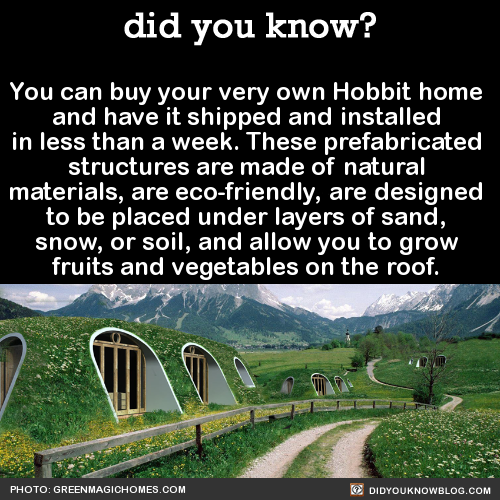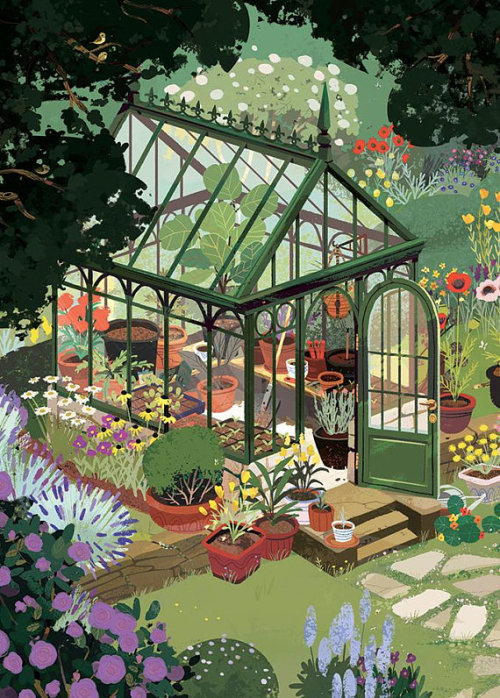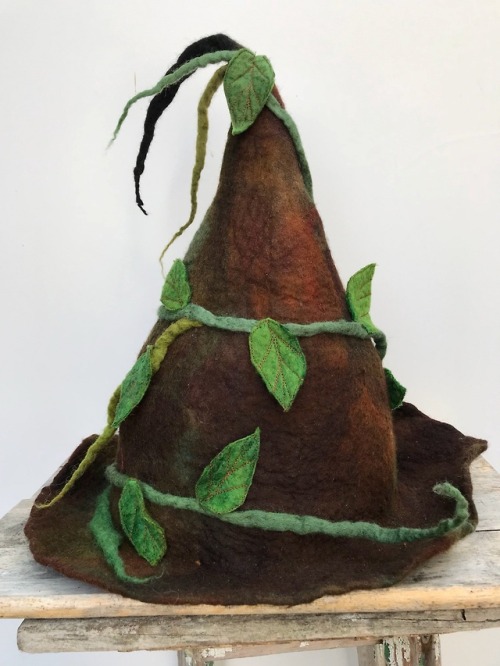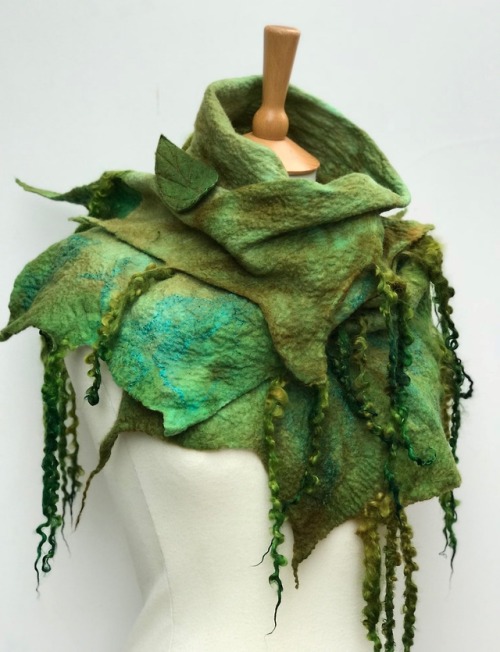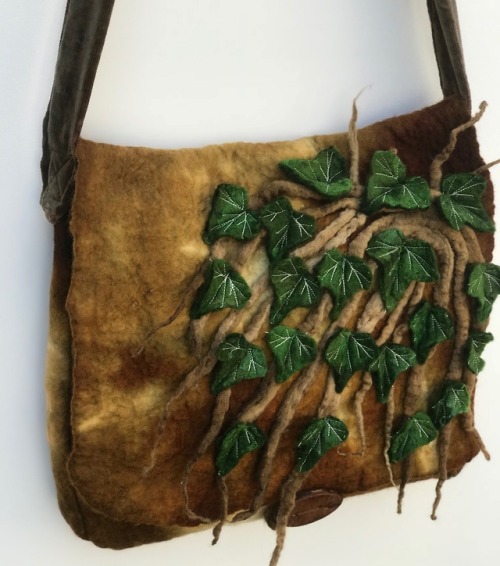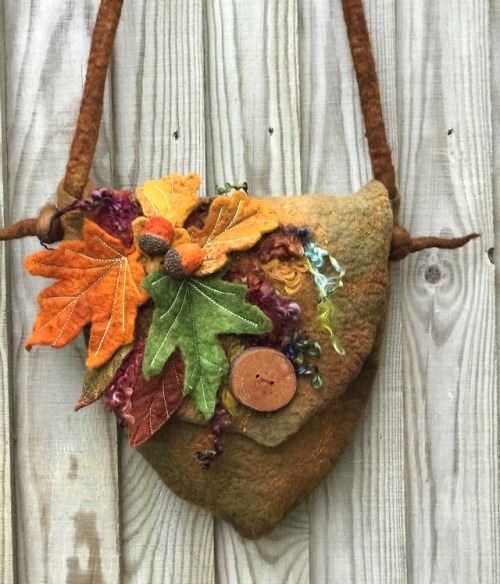Latest Posts by copperfingertips - Page 5


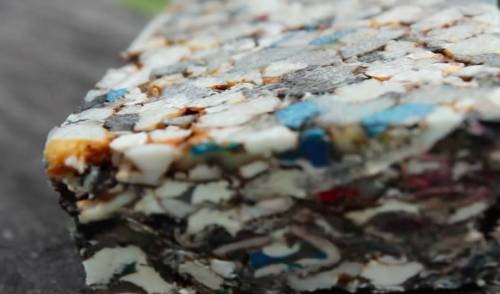
This startup is turning plastic waste into affordable housing
The company called Eco Domum, or Eco Home, is based in Puebla, Mexico. Founder Carlos Daniel González collects, sorts and melts down non-toxic plastics into a liquid, according to Unreasonable. That sludge is then put into a hydraulic press, which forms the plastic into hardened panels. It takes two tons of plastic to make one house. At scale, González’s plastic houses could be just what Mexico needs.
Follow @the-future-now
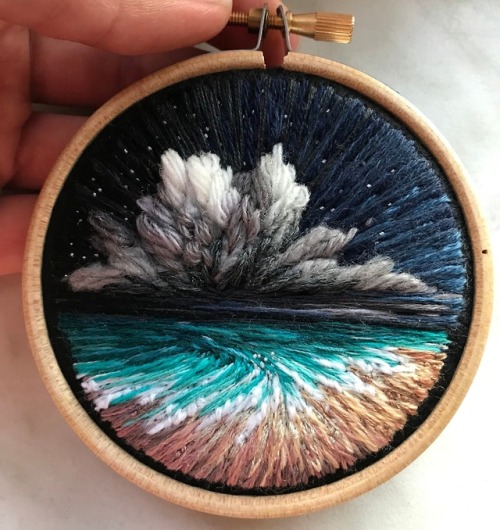
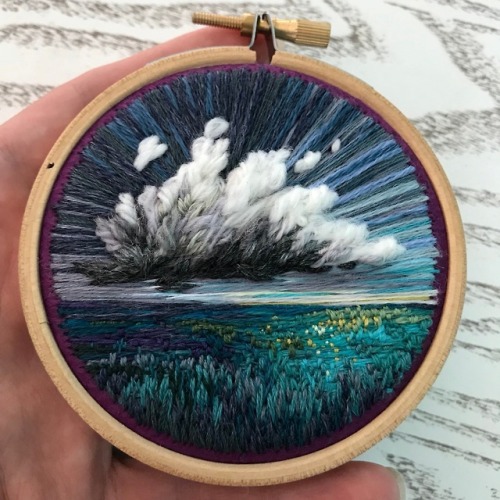
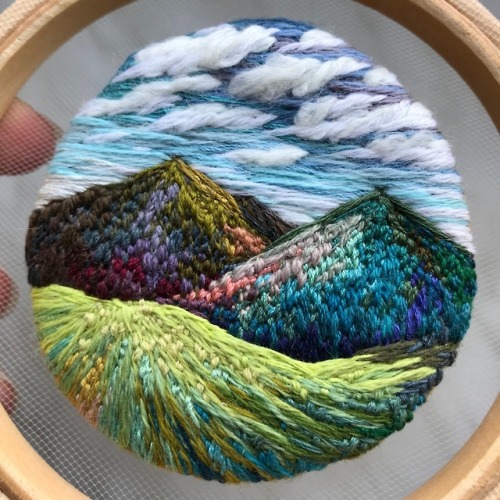
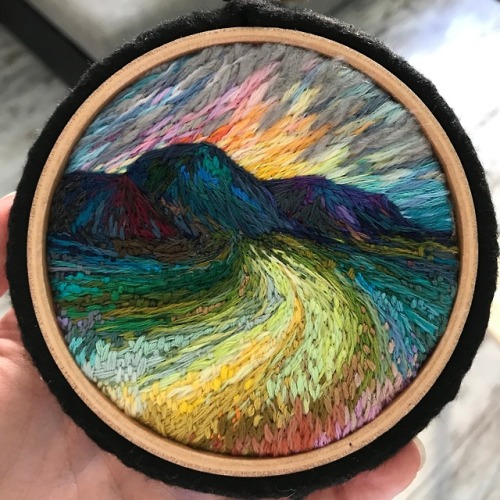
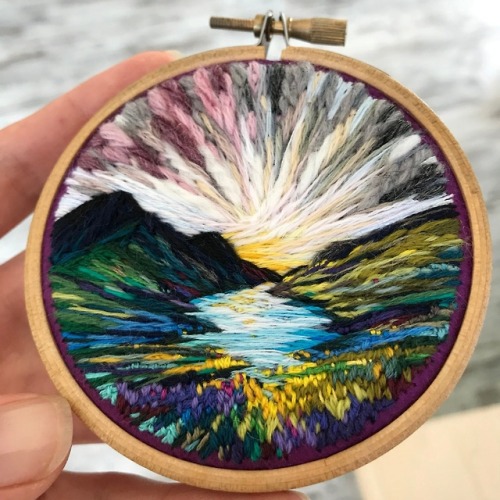
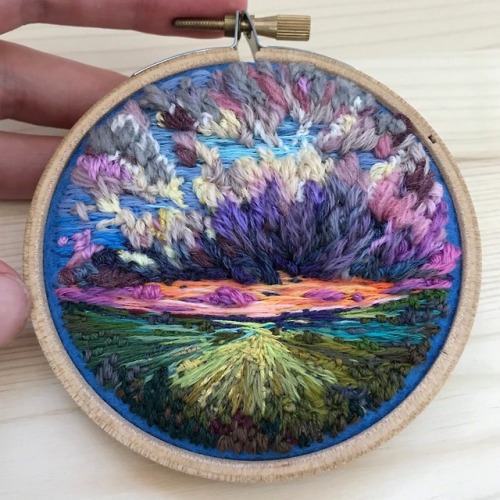
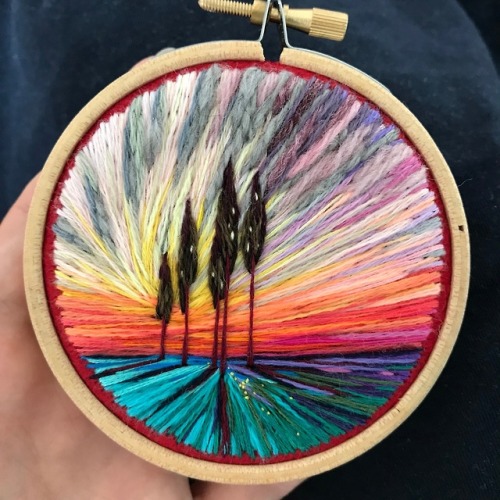
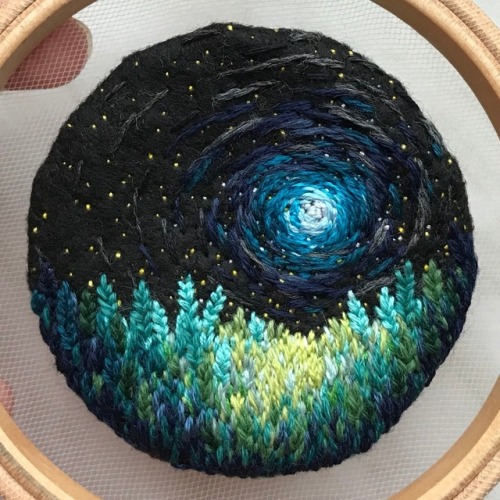
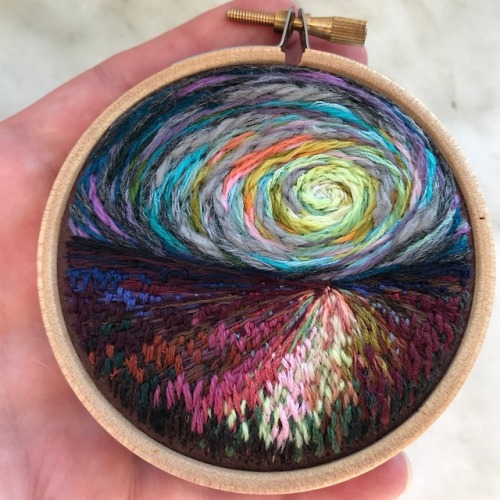
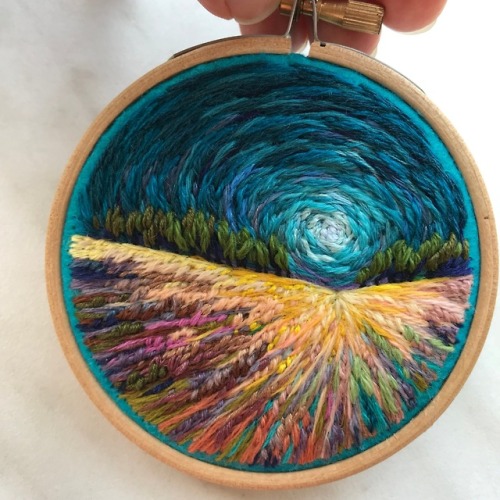
Embroidery Wall Art and Brooches
Shimunia on Etsy
See our #Etsy or #Embroidery tags



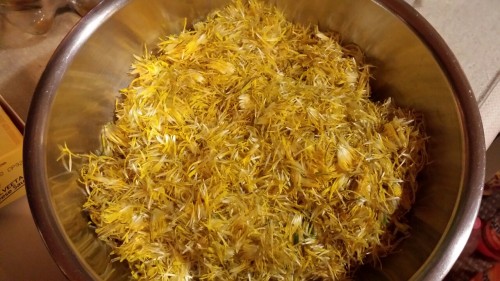
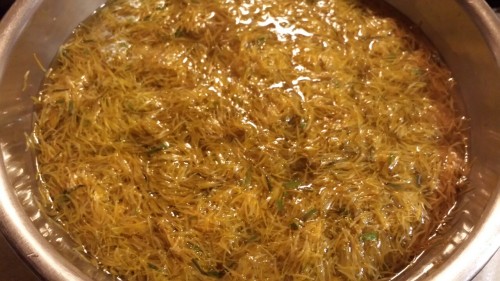
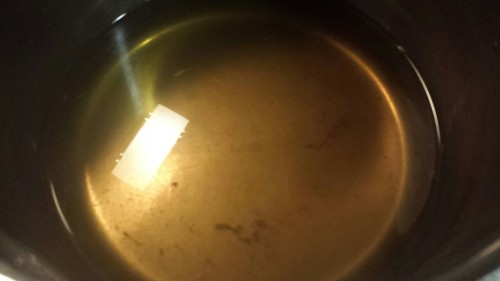

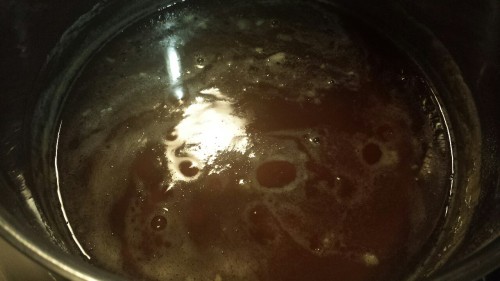
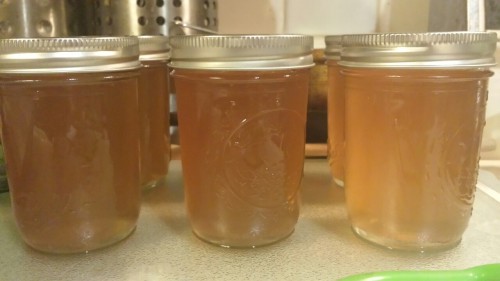
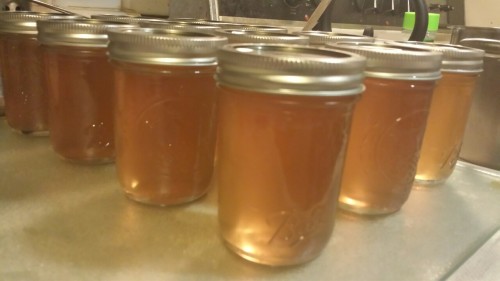
DANDELION JELLY! !! It tastes like honey! 🐝🐝🐝🐝🐝🐝🐝🐝🐝🐝🐝 been a busy bee last few days harvesting flowers, plucking petals, extracting nectar, straining and canning this delicious jelly! Very Tideaous work but it’s worth it!
3 cups dandelion tea (made from 4 cups of petals in boiled water overnight ) 4 cups of sugar 2 tbsp fresh lemon juice 6 tbsp of regular ball fruit pectin Water bath can for 10 minutes Makes 6 - ½ pints
4/20/16
solarpunk actions for minors/ppl with generally less independence ?
WOW LATE! Sorry, I’ve been without computer for a while.
Reuse! Wash and save jars. Rescue cans for planters. Before you toss something, think: is there another use for this?
Blow dandelion seeds around. Seriously, they grow anywhere and they’re useful from flower to tip.
On that note, learn what plants are edible where you are. Eat them.
Learn, research!
Find local organizations focused on conservation, food, and local sustainability. Donate money, time, stuff, whatever they need/you have.
Walk/bike places if you can/it’s safe
That’s all I have right now!! Anyone can reblog with more.

Researchers at Michigan State University have created a fully transparent solar concentrator, which could turn any window or sheet of glass (like your smartphone’s screen) into a photovoltaic solar cell. Unlike other “transparent” solar cells that we’ve reported on in the past, this one really is transparent, as you can see in the photos throughout this story. According to Richard Lunt, who led the research, the team are confident that the transparent solar panels can be efficiently deployed in a wide range of settings, from “tall buildings with lots of windows or any kind of mobile device that demands high aesthetic quality like a phone or e-reader.”
So some dude got sent to the hospital with cyanide poisoning because he was eating cherries and decided, for some fucking reason, to crack the pits open and eat the meat inside.
“I didn’t think nothin’ of it. Thought it was just a seed.”
“Deep breath”
I SWEAR TO THE FUCKIN GODS…..
(cue 25 minutes of unintelligible yelling)
….and that is why being separated from our food’s origins and not knowing anything about botany is what is wrong with the world today goddamnit.
Solarpunk fashion
So a lot of the solarpunk fashion I see is very pretty flowy sorts of things in muted natural colors like green and yellow, and it all looks very crystal spires and togas… But much of it runs counter to what I think of as sustainable clothing? Where the fuck are your pockets?
I pose that medical scrubs are ideal solarpunk fashion. Comfy as hell with good freedom of movement, simple patterns that most people can easily make at home, pockets for days. They’re intensely functional clothes, made from durable materials that are meant to withstand frequent washings, and often made from sustainable fabric.
7 reasons why solarpunk is the most important speculative fiction movement in the last 20 years
It’s hopeful. Solarpunk doesn’t require an apocalypse. It’s a world in which humans haven’t destroyed ourselves and our environment, where we’ve pulled back just in time to stop the slow destruction of our planet. We’ve learned to use science wisely, for the betterment of ourselves and our planet. We’re no longer overlords. We’re caretakers. We’re gardeners.
Scientists are heroes again. And not just physicists and astronomers. Knowledge of biology and earth sciences matter, they’re the building blocks for a future on Earth. Scientific literacy isn’t just for academics – it’s part of daily life. People know how the things they use work, and if they don’t, they can access that information.
It’s diverse. Solarpunk is rooted in using the environment, so it looks different in different places. Alternative energy is best when specific to place (I imagine geothermal, wind, tidal, and hydroelectric energy sources are still used in certain places) so no overarching government system is needed. Communities can organize themselves, taking their own location and needs and history into account. Brazilian, Inuit, Egyptian, Pacific Northwest, and New Zealand solarpunk can all look very different, but be unified in resourceful, intentional, low impact living.
Individuality still matters. In a post-scarcity society, ingenuity and self-expression are not sacrificed on the altar of survival. With solar power there’s no reason not to go off grid, if that’s what you want to do. Communities can self-organize. You can find a community that suits you, or go live by yourself if that floats your boat.
There’s room for spirituality and science to coexist. Solarpunk is rooted in a deep understanding and reverence for natural processes. There’s room for spirituality there, be it pagan, Buddhist, Sufi, Transcendentalism – anything. There’s so much to explore, from nature worship to organized monotheistic religions, and how they interact with solarpunk.
It’s beautiful. The most common solarpunk aesthetic is art nouveau, but again there’s room for diversity, incorporating art styles from multiple cultures in respectful, non-appropriative ways. The most important aspect of solarpunk aesthetic is the melding of art and utility. The idea of intentional living is strong in art nouveau, but it’s not the only art movement with that philosophy.
We can make it happen. Now. Earthships. Permaculture. Aquaponics. Algae lighting. Compostable products that turn into fields of flowers. Buy Nothing organizations. Tiny, beautiful, efficient homes. Solar power cells you can see through. That’s all happening now. Solarpunk is within our grasp, at least on a personal level. I’m not saying there aren’t still big, ugly infrastructures devoted to unethical consumption, but we can start to tear them down. We can build a solarpunk world with stories and small changes. And small changes lead to big changes. That’s the real beauty of solarpunk. It’s not a post-apocalyptic power fantasy. It’s not a wistful daydream, or an elite future only for physicists. It’s something we can work towards right now. It’s tangible.
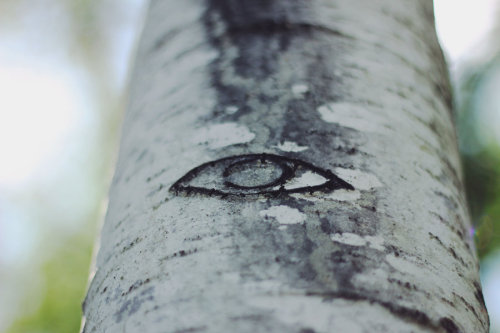
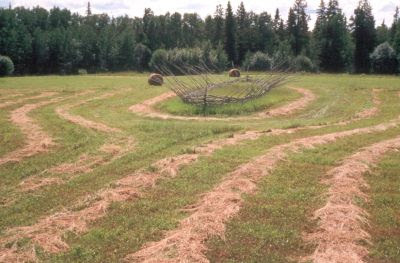
By copyrighting his property as an artwork, he has prevented oil companies from drilling on it.
Peter Von Tiesenhausen has developed artworks all over his property in northern Alberta. There’s a boat woven from sticks that is gradually being reclaimed by the land; there is a fence that he adds to each year of his life, and there are many “watching” trees, with eyes scored into their bark.
Oil interests pester him continually about drilling on his land. His repeated rebuffing of their advances lead them to move toward arbitration. They made it very clear that he only owned the top 6 inches of soil, and they had rights to anything underneath. He then, off the top of his head, threatened them that he would sue damages if they disturbed his 6 inches, for the entire property is an artwork. Any disturbance would compromise the work, and he would sue.
Immediately after that meeting, he called a lawyer (who is also an art collector) and asked if his intuitive threat would actually hold legally. The lawyer visited, saw the scope of the work on the property, and wrote a document protecting the artwork.
The oil companies have kept their distance ever since.
This is but one example of Peter’s ability to negotiate quickly on his feet, and to find solutions that defy expectations.
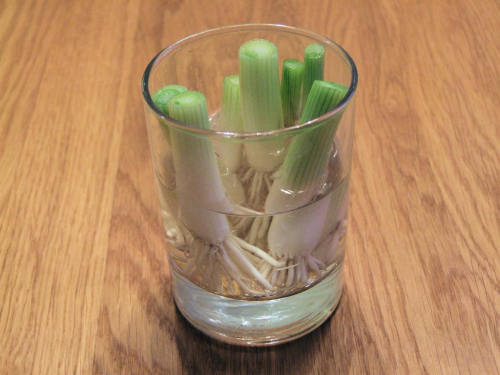
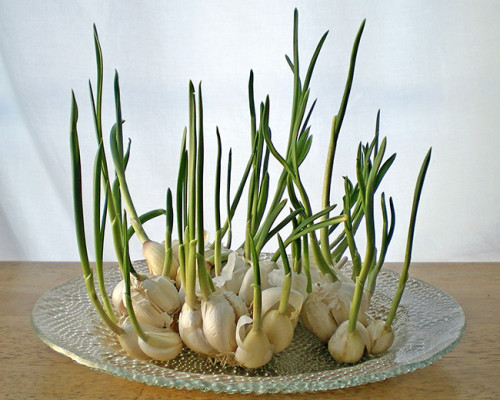
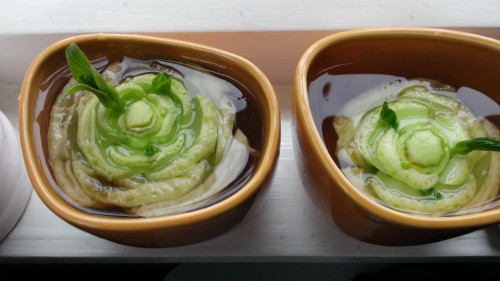
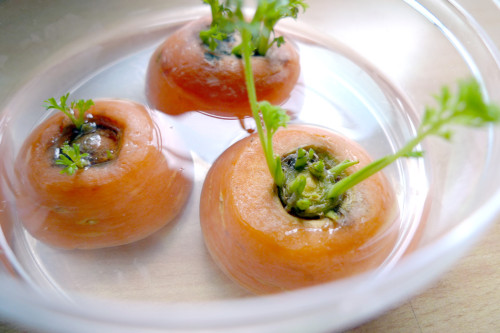
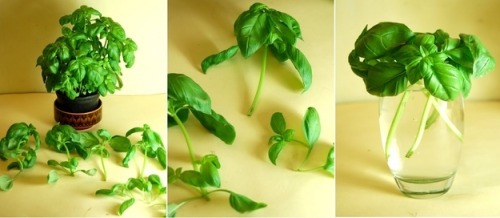

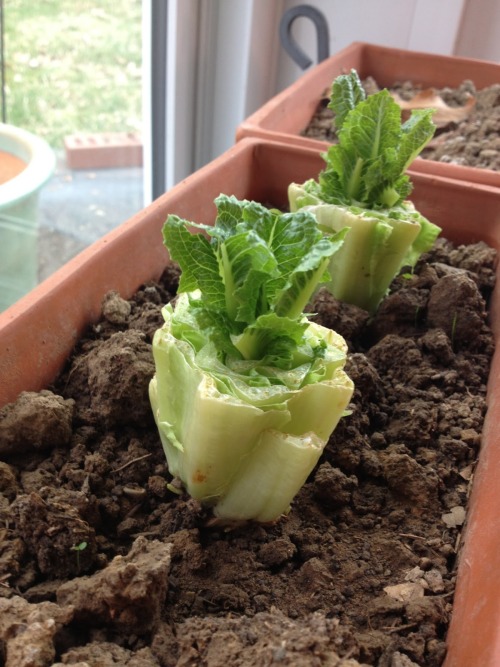
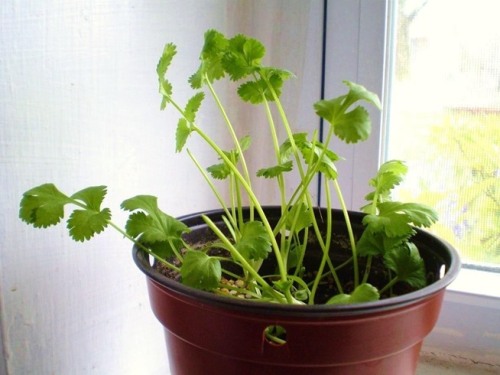
8 vegetables that you can regrow again and again.
Scallions
You can regrow scallions by leaving an inch attached to the roots and place them in a small glass with a little water in a well-lit room.
Garlic
When garlic begins to sprout, you can put them in a glass with a little water and grow garlic sprouts. The sprouts have a mild flavor than garlic and can be added to salads, pasta and other dishes.
Bok Choy
Bok choy can be regrown by placing the root end in water in a well-lit area. In 1-2 weeks , you can transplant it to a pot with soil and grow a full new head.
Carrots
Put carrot tops in a dish with a little water. Set the dish in a well-lit room or a window sill. You’ll have carrot tops to use in salads.
Basil
Put clippings from basil with 3 to 4-inch stems in a glass of water and place it in direct sunlight. When the roots are about 2 inches long, plant them in pots to and in time it will grow a full basil plant.
Celery
Cut off the base of the celery and place it in a saucer or shallow bowl of warm water in the sun. Leaves will begin to thicken and grow in the middle of the base, then transfer the celery to soil.
Romaine Lettuce
Put romaine lettuce stumps in a ½ inch of water. Re-water to keep water level at ½ inch. After a few days, roots and new leaves will appear and you can transplant it into soil.
Cilantro
The stems of cilantro will grown when placed in a glass of water. Once the roots are long enough, plant them in a pot in a well-lit room. You will have a full plant in a few months.
We See Seashores Shifting with Satellites
If you’re like us, as soon as the summer Sun is out, you start feeling – well, just beachy, sand you very much.
Lots of our favorite beaches are inside protected marine areas, which are regulated by governments to keep their ecosystems or cultural heritage intact. If you beachcomb at Cape Cod, swim in the Florida Keys or learn about Hawaiian culture at Papahānaumokuākea Marine National Monument, congrats! You’ve visited a protected marine area.

But time and tide haven’t been kind to some protected beaches.
Beaches are constantly changing, and science teams are using our 30-year record of Earth images from the NASA/USGS Landsat program to study what’s happening.
Overall, the sum total of sandy beaches has increased a bit over the last 30 years. But time and tide haven’t been as kind to our protected beaches – the team found that more than 1/3 of sandy beaches in protected marine areas have been eroding away.

Some of these areas were designated to protect vulnerable plant and animal species or connect delicate ecosystems. They are home to humpback whales and sea turtles, reefs and mangroves that protect the land from erosion and natural disasters, and species which are found in only one habitat in the world. Losing land area could upset the balance of these areas and endanger their future.

Next step: Looking for pearls of wisdom to save the beaches!
Right now, we aren’t sure which beaches are eroding due to natural processes, and which are due to humans – that’s the next step for science teams to investigate. Once we know the causes, we can start working on solutions to save the beaches.
Those 30 years of Landsat data will help scientists find answers to these questions much faster – instead of using airplanes or measuring the beaches by hand, they can use computer programs to rapidly investigate millions of satellite photos spanning many years of change.

By tracking beaches from space, scientists can help keep our summers sandy for years to come.
And that makes us as happy as clams.
Read the full story HERE.
Make sure to follow us on Tumblr for your regular dose of space: http://nasa.tumblr.com.
I haven’t even read any communist stuff my ideology is “share and be nice” like the first two rules of a kindergarten
Humans are a communal species that have banded together and cared for their sick, disabled, and elderly since before we were ever modern man. Resources were shared even as skills specialized.
Capitalism isn’t natural. A community should not have members dying of starvation or exposure while there is an abundance of resources. That isn’t how it works. That isn’t how it’s supposed to work.

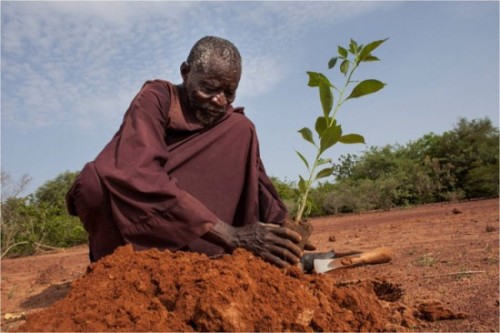

Yacouba Sawadogo is an exceptional man – he single-handedly managed to solve a crisis that many scientists and development organizations could not. The simple old farmer’s re-forestation and soil conservation techniques are so effective they’ve helped turn the tide in the fight against the desertification of the harsh lands in northern Burkina Faso.
Over-farming, over-grazing and over population have, over the years, resulted in heavy soil erosion and drying in this landlocked West African nation. Although national and international researchers tried to fix the grave situation, it really didn’t really make much of a difference. Until Yacouba decided to take matters into his own hands in 1980.
Yacouba’s methods were so odd that his fellow farmers ridiculed him. But when his techniques successfully regenerated the forest, they were forced to sit up and take notice. Yacouba revived an ancient African farming practice called ‘zai’, which led to forest growth and increased soil quality.
(Fact Source) Follow Ultrafacts for more facts

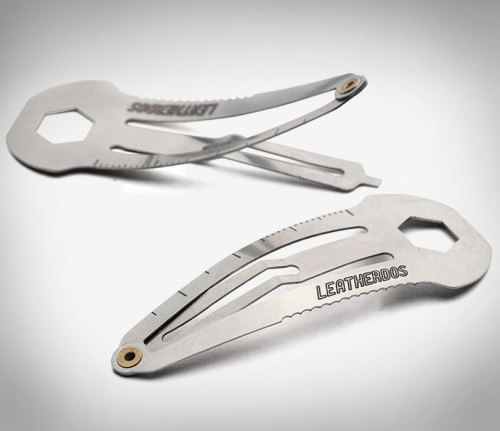
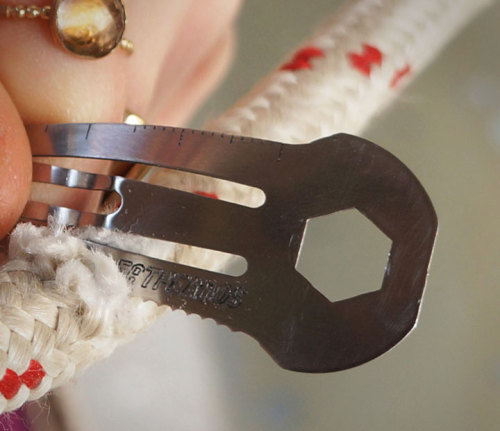
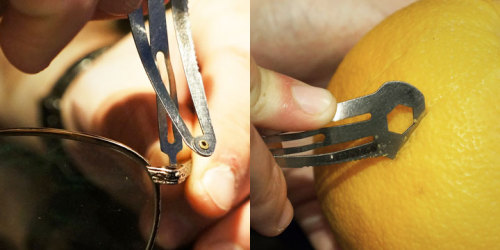
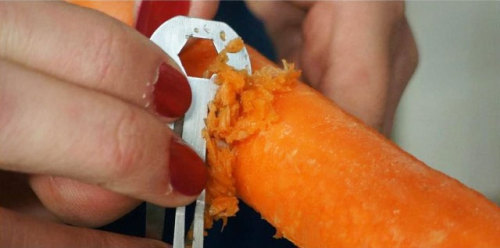
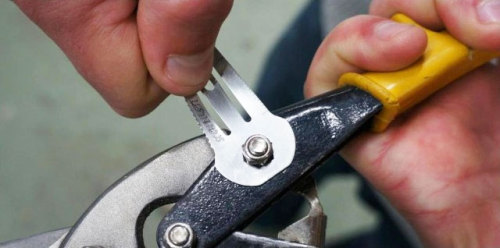
The Leatherdos is a hair clip that doubles as a multi-tool that combines 5 different tools in a tiny hair clip: screw-drivers, a wrench, a trolley coin, a ruler, and a cutting edge.
—->http://odditymall.com/leatherdos-is-a-hair-clip-multi-tool
Lunarpunk Futures
All digital media is free to download and access by all even academic journals. But that doesn’t stop you from getting physical copies of your most cherished books on your shelves.
Study sessions and debates that bleed into the early morning hours at cafe’s with friends about philosophy, politics, and religious thought when your not engaged in actual study for one of your chose degree paths which are all free at your local university and online.
Late nights spent among strangers with telescopes pointing out the stars and learning their names.
Hacked fabric printers to print customized clothing in any size, shape, color, or pattern required. Need a skirt that looks good in a wheelchair? Check. Need a religious article of clothing? Check. Wanna change that to a bamboo silk instead of cotton? Check. Wanna put your own touches and designs on a pre-made base? Done.
Multilingualism is the norm and there are meetups to learn and share languages with each other.
Tablets that have great internal storage capabilities as well as settings for every language, blue light filtering, captions, font changes for dyslexia, dark mode, and more all built in by default.
Voting has taken on a whole new meaning with debates about the benefits or problems with bills, elections, etc. Voting is done regularly and with more public participation than ever before.
Every person has a guaranteed income that is above the poverty lines of the past, increases over time, and housing and healthcare are guaranteed.
Solar lanterns in tea gardens late at night listening to splash of koi fish while reading Basho.
Accessibility is built in by design in every building, walkway, path, etc. with bioluminescent lighting as needed.
Every home and apartment grows their own herbs, fruit trees hang over bioluminescent permeable sidewalks, and wild permaculture gardens are in every backyard.
Grocery stores contain zero advertising, offer delivery if needed, biodegradable and plastic free. Everything is designed to be recyclable or returned to nature is a beneficial way.
Rules on light and sound pollution preserve natural biological systems and keep wildlife stress to a minimum. Public transportation is the norm, there are still bicycles, electric mopeds, and wheelchair accessible self-driving taxis.
There is an online veggie trading system that allocates veggies to those who need them from those who have too many.
University is open to everyone and lifelong learning is emphasized. Emphasis is on learning and understanding topics not passing exams.
There are libraries, water bottling refilling stations, and green-spaces are the default.
*That’s all for now, I’ve currently got a cold and can’t think of anything else atm. I’ll try to keep posting things like this in the future though. :)

I’ve been thinking about places to live, in the desert and in generally hotter climate, and the idea of underground houses seemed like a good one. For now, here is a stairwell leading down to such a house, complete with tiny greenhouse. It has translucent solar panels as glass, which still let the red light through that plants need most.
I honestly think that we would eliminate one of the major causes of ableism if we stopped basing people’s worth off how much revenue they generate.

“This is my first cabbage! You know, a lot of times they’re kind of soft, but this one is solid! It’s going to be good eatin’!“ “What are you going to make with it?” “Well, this one I’m giving to my parents. You have to give the first one away or you just spoil the whole spirit of gardening.”
low impact places around the world
belgium, europe

bhutan, asia

“bhutan mantains this by making the country a carbon sick and has set world records for planting the most trees per hour. they’re also aiming for zero net greenhouse gas emissions and zero-waste by 2030 as well as 100% organic food production. the bhutanese government has also formed a partnership with nissan to provide thousands of electric cars to the country” - @greenmatters on instagram
it also probably helps that tourists are very limited and it is intentionally not as easy to travel there.
chile, south america


china, asia


“china recently announced they would spend more than $360 billion on renewable energy through 2020″ - @greenmatters on instagram, june 29, 2017
colombia, south america

“colombia is the first country in latin america, and the third country in the world, to pledge to produce deforestation-free coca. the pledge is part of the cocoa and forest initiative, which ghan and cote d’ivoire have also signed.” - @greenmatters on instagram
costa rica, central america



“costa rica’s renewable energy comes from hydropower, geothermal, wind, and solar” - @greenmatters on instagram
egypt, africa

england, europe


ethiopia, africa

“energy produced by the new geothermal power plants will be used locally and exported to surrounding countries in africa” - @greenmatters on instagram
france, europe

“instead of throwing away or destroying unsold clothing, france may pass legislation to make clothing companies donate or repurpose items in an eco-friendly way.” - @greenmatters on instagram
INSTEAD, they should make efforts to not overproduce. donating clothes should be thoughtful. many times, when clothes are donated abroad to “developing” countries, it destroys their local economy and opportunities for local clothing stores to sell their clothes cheaply enough. it is good to think of ways to responsibly get rid of “waste” and excess we do create, but the first step should be to stop the excess from being produced in the first place. #preventative measures.




india, asia


ireland, europe

“the irish state investment fund holds more than 300 euros in fossil fuel investments in 150 companies. the bill defines a fossil fuel company as a compnay that derives 20% or more of its revenue from exploration, extraction, or refinement of fossil fuels. the bill also allows investment in irish fossil fuel companies if this funds their move away from fossil fuels” - @greenmatters on instagram
germany, europe

new zealand


“new zealand hopes to transition to 100% renewable energy by 2035″ - @greenmatters on instagram
palau

“the pledge is tamped on every visitor’s passport and must be signed before entry into the 13th smallest country in the world. palau’s hoping the pledge will help guests understand the vital role they play in protecting palau for future generations” - @greenmatters on instagram
peru, south america

scotland, europe


“scotland has hit its 2020 emission target five years early and has gone from 10% to 60% of its electricity consumption from clean sources over the past 15 years” - @greenmatters on instagram
sweden, europe

“so far, sweden is on track to meet their 2030 goals nine years early, thanks to a surge in wind power installations” - @greenmatters on instagram
united states of america, north america

maui, hawaii, usa, north america

san francisco, california, usa, north america

nebraska, usa (winnebago tribe), north america

“the tribe started to transition towards renewable energy over a decade ago and now has 400 kW of installed solar panels. by switching to solar power, their saving roughly $46,000 annually on electricity” - @greenmatters on instagram
minneapolis, michigan, usa, north america

“minneapolis, minnesota is the next city in the united states to commit to a goal of running on 100% renewable energy. they plan to have all their city facilities running on clean power by 2022 and the entire city by 2030. the [sierra club] notes that minneapolis is now the 65th city in the country placing folly renewable goals” - @greenmatters on instagram
new york, usa, north america

“[governor cuomo] says the offshore wind farm will be critical to help new york state reach their goal of reducing greenhouse gases by 80% by 2050. in total, the wind development will generate 2.4 gigawatts of clean power.” - @greenmatters on instagram

“the money will fund 26 large-scale projects that will help new york reach its goal of using 50% renewable energy by 2030″ - @greenmatters on instagram
denton, texas, usa, north america

“the city of denton (pop. 130k) will install enough solar and wind to power everything by 2020. currently, georgetown, tx (30 miles north of austin) has the title of the largest community (60k) that relies on renewable energy in the u.s.” - @greenmatters on instagram
taiwan, republic of china

“to prepare their citizens for the plastic ban, the taiwanese government will be adding additional charges to plastic straws, utensils, cups and containers over the next several years. additionally, the taiwanese government will be launching a number of marine clean-up programs. currently, the average taiwan citizen uses 700 plastic bags per year” - @greenmatters on instagram
wales, europe

“the welsh government has spent roughly $10.4M to improve recycling services through their collaborative change programme, which gives local authorities money to improve recycling programs in the way they think best. by working closely with citizens, who are thrilled by the zero-waste goal, wales could show the world that a country can accomplish extraordinary things when the will of the people is supported by the government” - @greenmatters on instagram
copyright infringement is not intended, simply trying to share credited work that will help make the world a better place to live a quality life
adults are always talking about how “kids will do anything to get out of school” and okay, first of all that’s not true, but I think we really need to ask why that idea holds so much sway.
children’s brains are hard-wired to take in new information and acquire new skills. consider, for a moment, just how thoroughly our society had to fuck up the concept of education for it to be a normal thing to assume kids are universally desperate to avoid learning.








